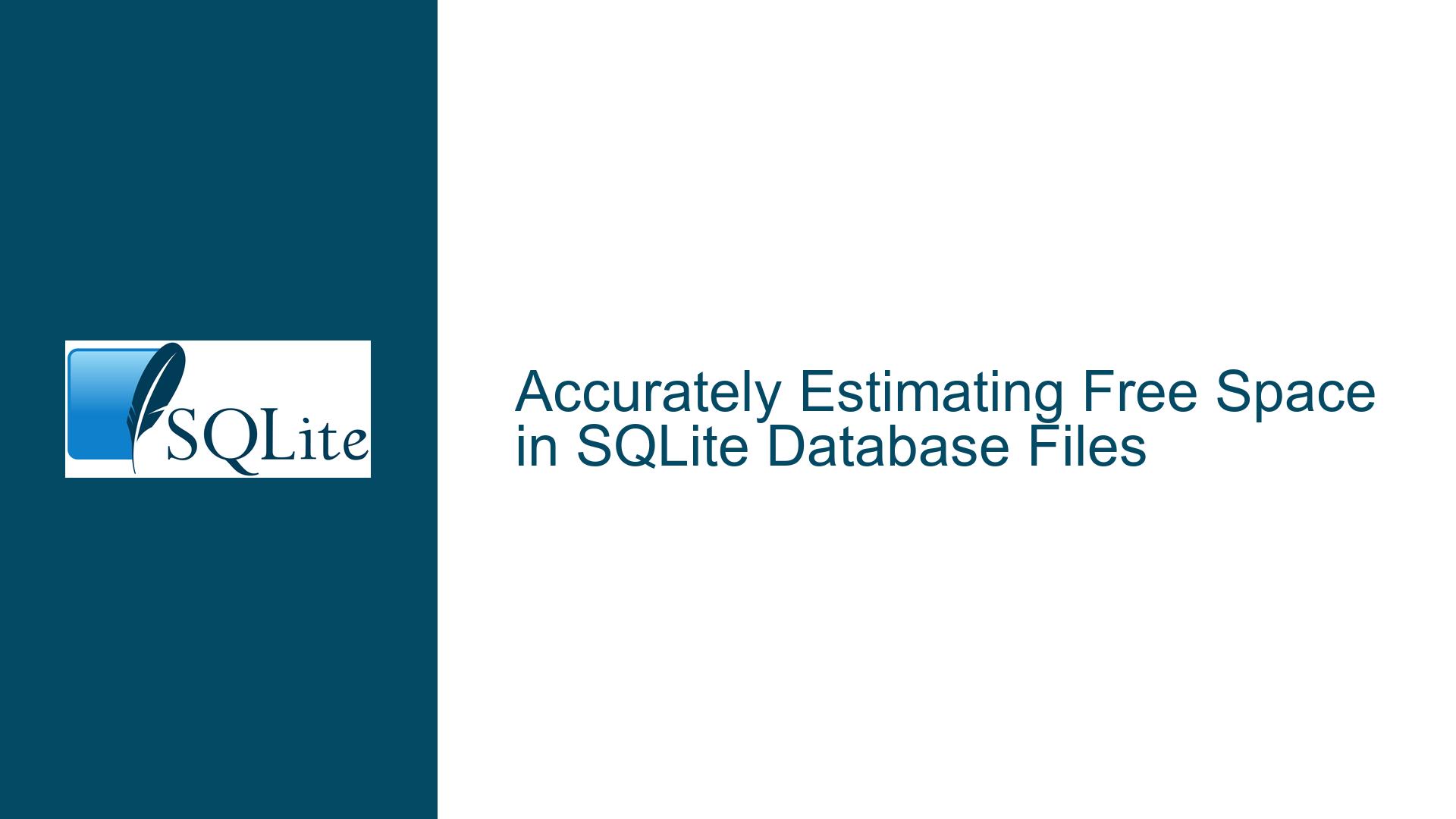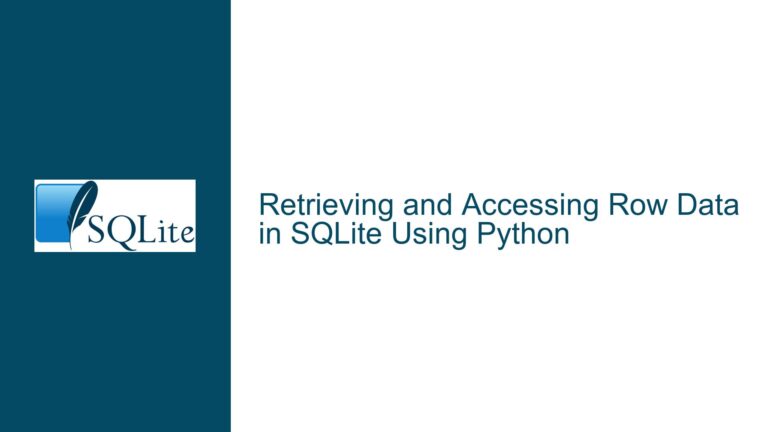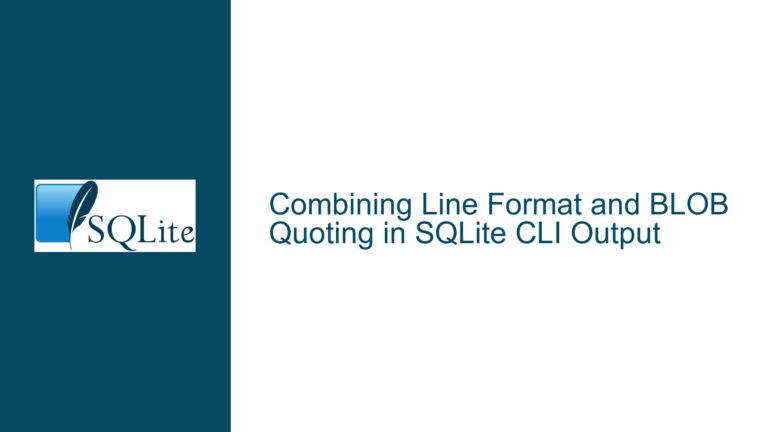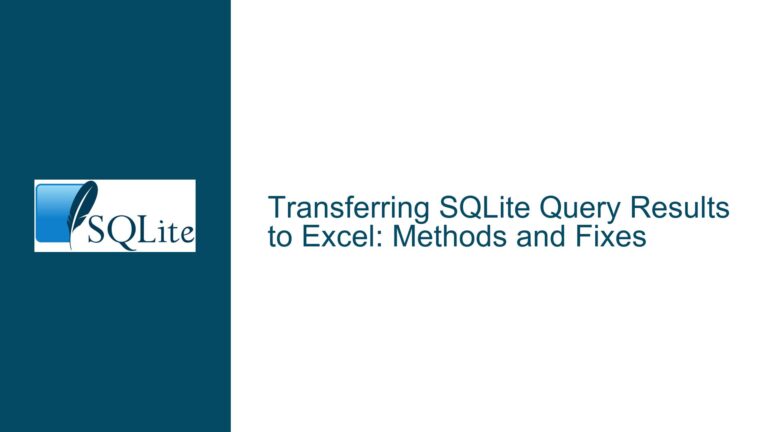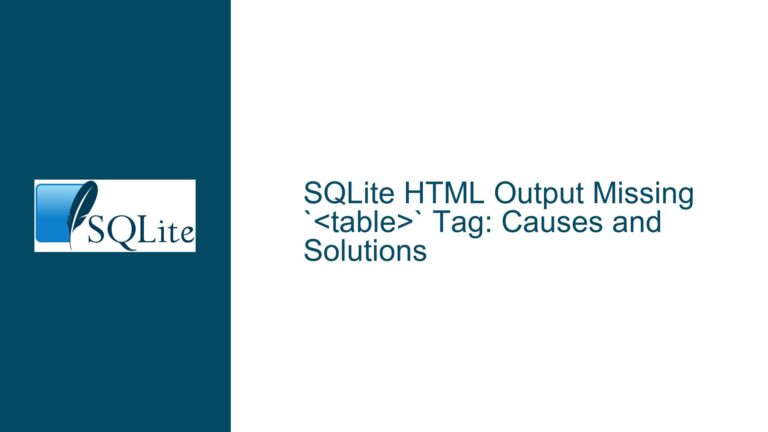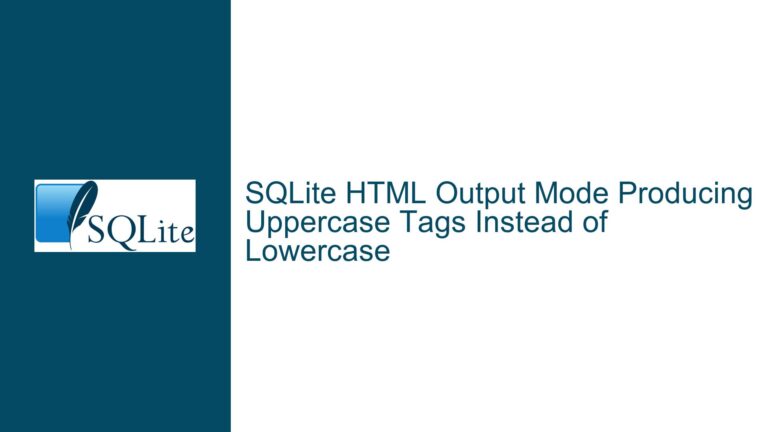Accurately Estimating Free Space in SQLite Database Files
SQLite File Structure Fundamentals and Free Space Estimation
1. SQLite Database File Anatomy and Freelist Page Tracking
SQLite databases are structured as a collection of fixed-size pages, typically ranging from 512 bytes to 65536 bytes, as defined by the PRAGMA page_size value. The first 100 bytes of the database file constitute the database header, which contains metadata critical for internal operations. At byte offset 36 within this header (0x24 in hexadecimal), a 4-byte big-endian integer stores the freelist page count—the number of pages currently marked as unused but still allocated within the file. These freelist pages represent space that was previously occupied by deleted data or schema objects but remains part of the file’s physical footprint.
When a VACUUM operation is executed, SQLite reconstructs the entire database into a new file, omitting freelist pages and other fragmented space, thereby reducing the file size. The relationship between freelist pages and wasted space is direct: multiplying the freelist page count by the page size yields an approximate value for recoverable space. For example, a database with a 4096-byte page size and 375,000 freelist pages would have roughly 1.5 GB of space that could be reclaimed via VACUUM.
However, directly reading the freelist count from offset 36 via low-level file operations poses significant risks. SQLite relies on operating-system-specific advisory locks (e.g., POSIX fcntl() locks on Unix-like systems) to coordinate concurrent access. Manually opening and closing the database file using standard file I/O functions—even for read-only purposes—can inadvertently disrupt these locks. If another thread or process holds an open SQLite connection, manually closing the file descriptor may clear locks that SQLite believes are still active. This creates race conditions where simultaneous write operations could corrupt the database.
2. Risks of External File Access and Locking Conflicts
The primary danger of bypassing SQLite’s APIs lies in violating the locking protocol that ensures transactional integrity. SQLite uses a series of escalating locks (UNLOCKED, SHARED, RESERVED, PENDING, EXCLUSIVE) to coordinate read and write operations across multiple connections. When a process opens a database file through sqlite3_open(), it establishes a connection that manages these locks internally.
If a separate thread or process uses raw file I/O to open the same database, two critical issues arise:
- Lock Invalidations: Closing the file descriptor (e.g., via
close()in C) removes all associated locks, even if other SQLite connections are actively using the database. This can cause a connection holding a RESERVED lock to suddenly lose its lock state, leading to incomplete transactions or corrupted pages. - Cached State Mismatches: SQLite connections cache metadata such as the schema, page size, and freelist count. External modifications to the database file (e.g., truncating it or altering header fields) without notifying open connections result in cached data becoming stale. Subsequent operations may then reference invalid page numbers or offsets.
Furthermore, freelist page counts obtained via direct file reads are not guaranteed to reflect the current state of the database. The freelist is a linked list of unused pages, and its head pointer (stored at offset 32) can change dynamically as pages are added or removed. A race condition could occur where the count read from offset 36 is outdated by the time it is used, especially in write-heavy environments.
3. Safe Free Space Estimation Using PRAGMA Statements
To avoid these pitfalls, SQLite provides built-in mechanisms to retrieve freelist and page size information safely. The PRAGMA freelist_count command returns the current number of freelist pages, while PRAGMA page_size provides the active page size. Executing these pragmas through an SQLite connection ensures that all locking protocols are respected and that the values reflect a consistent snapshot of the database state.
A robust query to estimate free space is:
SELECT (freelist_count * page_size) AS free_space
FROM pragma_freelist_count, pragma_page_size;
This cross-join between the two pragma functions works because both return a single row. The result is a precise calculation of the space occupied by freelist pages at the moment the pragmas are executed.
Implementation Considerations:
- Connection Lifetime: Open a dedicated SQLite connection using
sqlite3_open()or equivalent in your programming language. Avoid sharing this connection across threads unless it is explicitly thread-safe. - Read-Only Transactions: Wrap the pragma queries in a read transaction (
BEGIN TRANSACTION;…COMMIT;) to ensure the freelist count does not change during execution. - Auto-Vacuum Mode: If the database uses
PRAGMA auto_vacuum = 1(incremental vacuum) orauto_vacuum = 2(full auto-vacuum), freelist pages may be reused automatically, reducing the accuracy of the estimate. In such cases,freelist_countonly reflects pages not yet reclaimed by background vacuum operations. - WAL Mode: Databases in Write-Ahead Logging (WAL) mode may have additional unvacuumed space in the WAL file. The pragma-based estimate accounts only for the main database file, not the WAL.
For developers requiring higher precision, the sqlite3_db_status() C API function with the SQLITE_DBSTATUS_CACHE_USED parameter provides deeper insights into page cache utilization, though this is accessible only through native code extensions.
Edge Cases and Validation:
- Freelist Truncation: SQLite does not immediately truncate the database file when pages are moved to the freelist. The
VACUUMcommand is required to shrink the file physically. - Temporary Databases: If the database is in-memory or temporary (
:memory:), the freelist count is always zero. - Encrypted Databases: Third-party encryption extensions (e.g., SQLCipher) alter the low-level file structure. Direct file reads would return encrypted data, rendering the offset 36 method unusable.
By adhering to SQLite’s public APIs and avoiding direct file manipulation, developers ensure thread safety, prevent corruption, and maintain accurate free space estimates across all operational contexts.
